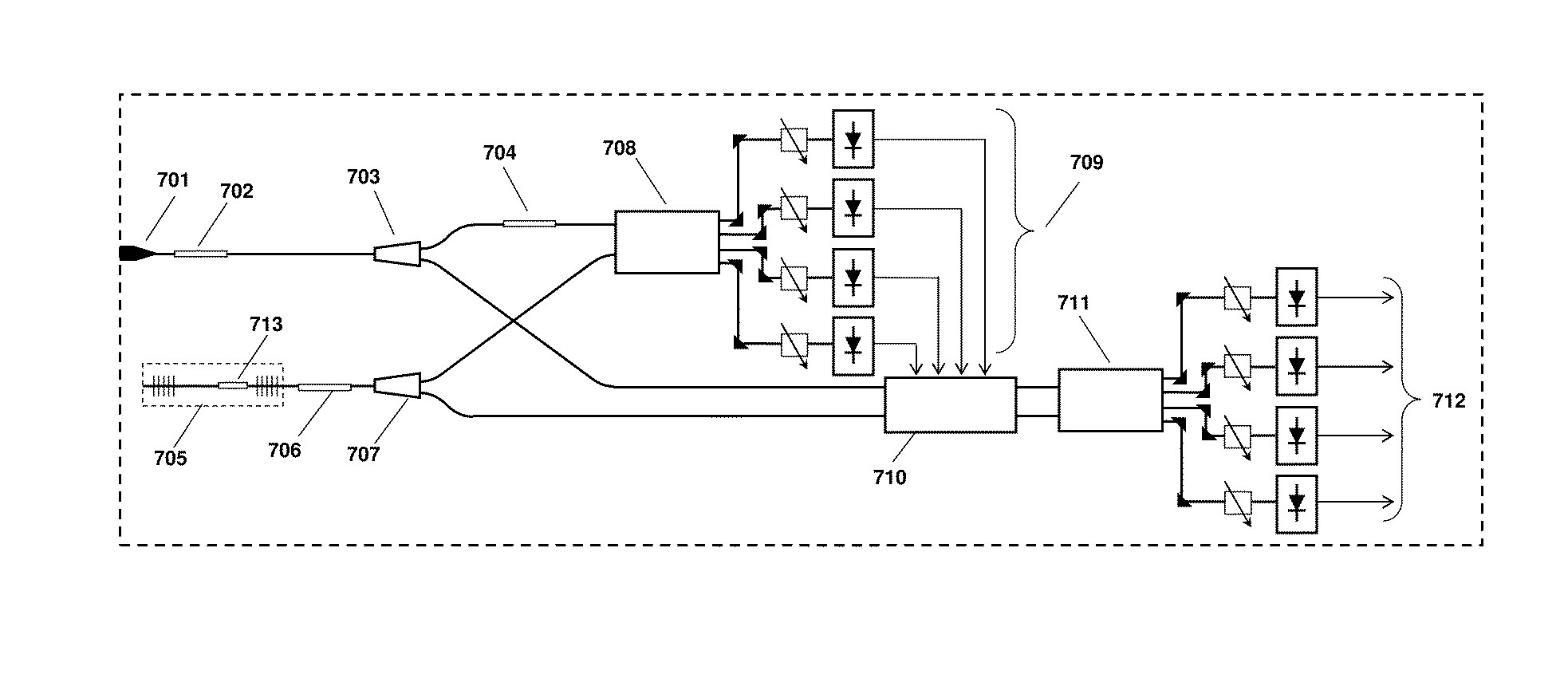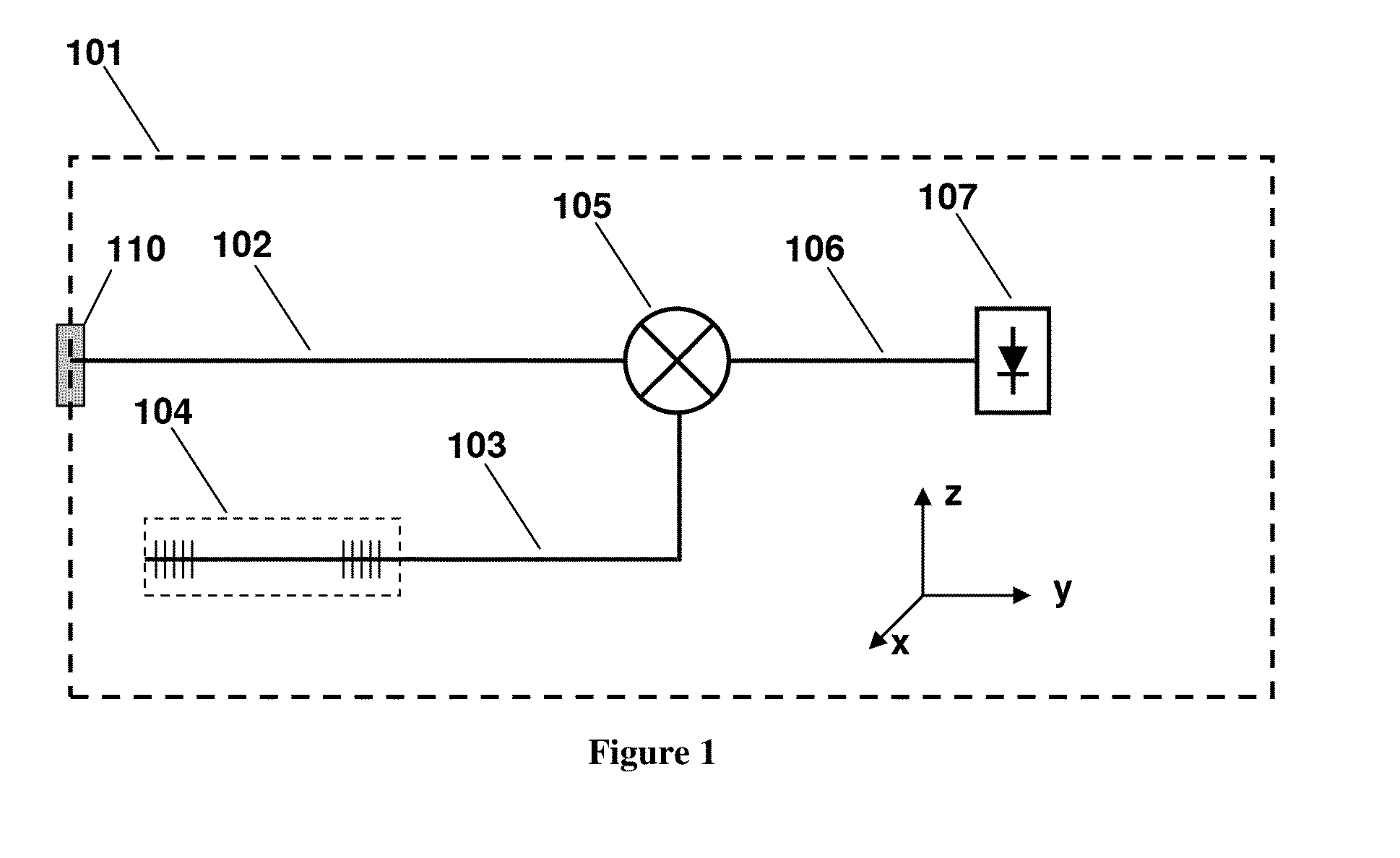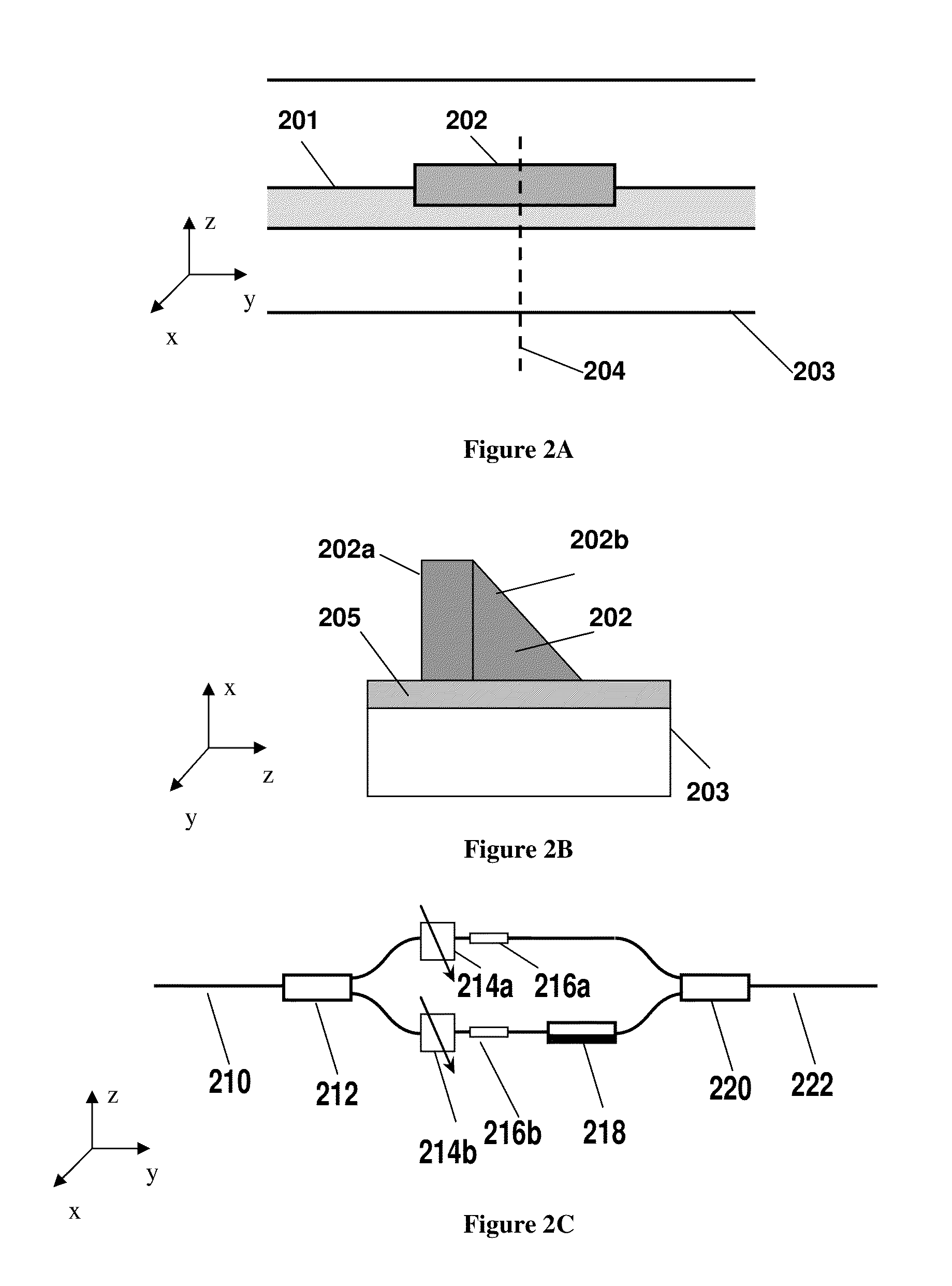Monolithic widely-tunable coherent receiver
a receiver and widely tunable technology, applied in the field of optical communication photonic integrated circuits, can solve the problem of not being able to use the current receiver architecture, and achieve the effects of reducing the footprint and/or the die size, reducing fabrication complexity, and reducing the size of the di
- Summary
- Abstract
- Description
- Claims
- Application Information
AI Technical Summary
Benefits of technology
Problems solved by technology
Method used
Image
Examples
embodiment 1
[0044]FIG. 3 illustrates an embodiment of a coherent receiver that is formed on a common substrate. In the illustrated embodiment, an external modulated optical signal is coupled into a first waveguide integrally formed on the common substrate. Improved optical coupling efficiency to the integrated receiver can be achieved through integration of a mode-converter 301. In various embodiments, the receiver die may comprise an input interface through which the external modulated optical signal is input to the receiver die and coupled into a waveguide such that the incoming external optical modulated optical signal propagates along a direction parallel to the +y-axis. In various embodiments the input interface may comprise an input facet and / or the mode converter 301. The external modulated optical signal can have a modulation bandwidth in the range of approximately 5 GHz to approximately 50 GHz. The external modulated optical signal can have an optical power between about −50 dBm and ab...
embodiment 2
[0048]FIG. 4 illustrates another embodiment of a coherent receiver device. As discussed above, the illustrated receiver device can be formed on a common substrate comprising at least one monocrystalline substrate. The receiver comprises an input waveguide configured to receive an external modulated optical signal, a local oscillator 403, an optional optical amplifier 404 disposed at the output of the LO 403, TIR mirrors 405, a 2×4 or 2×N optical mixer 406 and a plurality of photo detectors / photodiodes 409. In various embodiments, the output waveguides of the mixer 406 can be rapidly fanned-out by using a plurality of TIR mirrors 407. In various embodiments, the mixed output in one of the output waveguides can have a relative phase difference φ, between the phase of the external modulated optical signal and the phase of the local oscillator LO, while the mixed output in a second output waveguide can have a relative phase difference of φ±90 degrees, between the phase of the external m...
embodiment 3
[0050]The embodiment illustrated in FIG. 5 includes many components and features that are similar to the components and features described in the embodiment illustrated in FIG. 3. For example, the embodiment illustrated in FIG. 5 comprises a LO 501, an optional optical amplifier section 502, a mixer 503 and a plurality of photodetectors 506. In various embodiments, the embodiment illustrated in FIG. 5 may include a mode converter 505 at the input interface. The embodiment illustrated in FIG. 5 further comprises a tunable polarization rotator 504 disposed between the output of the LO 501 and the input of the optical mixer 503. The tunable polarization rotator 504 may be similar to the various embodiments of the polarization rotator described with reference to FIGS. 2A-2C. The output of the tunable polarization rotator can be tuned to match the polarization of the optical signal generated by the LO 501 to the polarization of the incoming modulated optical signal coupled in to the devi...
PUM
 Login to View More
Login to View More Abstract
Description
Claims
Application Information
 Login to View More
Login to View More - R&D
- Intellectual Property
- Life Sciences
- Materials
- Tech Scout
- Unparalleled Data Quality
- Higher Quality Content
- 60% Fewer Hallucinations
Browse by: Latest US Patents, China's latest patents, Technical Efficacy Thesaurus, Application Domain, Technology Topic, Popular Technical Reports.
© 2025 PatSnap. All rights reserved.Legal|Privacy policy|Modern Slavery Act Transparency Statement|Sitemap|About US| Contact US: help@patsnap.com



